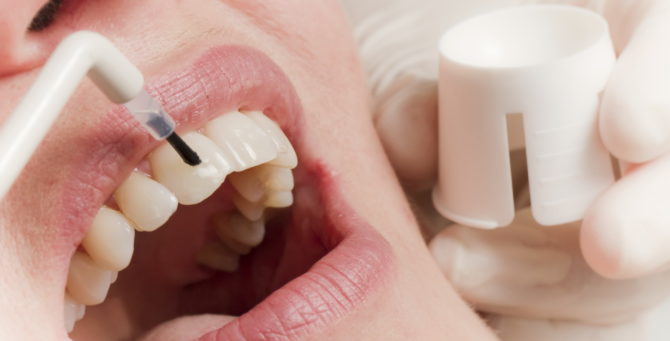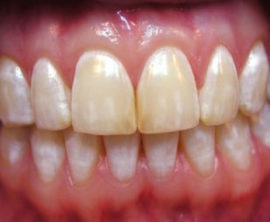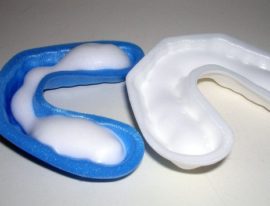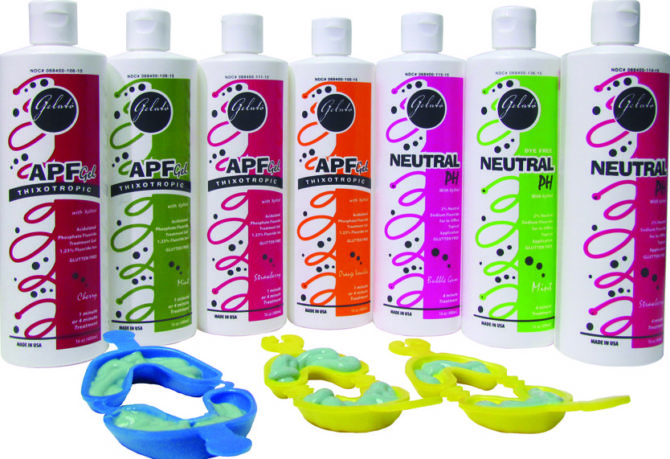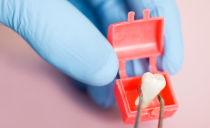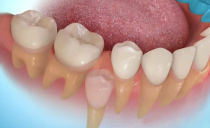Methods and stages of tooth fluoridation, enamel fluoridation at home
Deep fluoridation of teeth is most often done for children, but for adults this procedure can be extremely useful. In just one visit to the dentist using this technique, you can solve a lot of problems with tooth enamel.
Content
What is fluoridation of tooth enamel
Fluoridation is the saturation of the upper layers of the tooth with active components. There are different types of methods, but the principle of their action is always the same: a special preparation with a high content of active substance is applied to the patient’s teeth, fluoride ions form calcium fluoride in contact with enamel, the process helps to strengthen hard tissue and prevent the development of a number of diseases.
The procedure is safe, requires minimal time and is painless, therefore it is actively used in pediatric dentistry.
Indications for tooth fluoridation
The main task of fluoridation is enamel strengthening. This effect is necessary in the treatment of a huge number of diseases, for their prevention and even to improve the appearance of a smile.
Dentists prescribe a procedure in the following cases:
- Hypersensitivity, strong reaction to hot or cold.
- The presence of external defects of enamel: scratches, chips.
- Prevention of caries in children and adults.
- Treatment of the initial stage of caries on children's teeth.
- Enamel strengthening after wearing braces.
- Prevention of hypersensitivity after professional cleaning or bleaching.
- Increased strength of composite restoration or fillings.
Most often, fluoridation is used to prevent problems with enamel, less often - to strengthen it. Fluoridation itself will not be able to restore the protective enamel layer, but in combination with other measures, it gives good results.
When treating baby teeth, the procedure is also not a panacea. If the child's enamel actively deteriorates, then first of all, you need to reconsider his nutrition and oral care. Fluoridation is only an additional measure.
Contraindications to tooth fluoridation
Fluoride is a component useful for tooth tissues, but if used improperly, it can be very dangerous. Excess fluoride in the body leads to fluorosis, with this disease, the teeth are especially severely affected: spots appear on the enamel, its sensitivity increases.
It turns out that the fluorination of enamel can lead to the effect opposite to that expected. Therefore, the procedure is prohibited if:
- The patient is already diagnosed with fluorosis.
- A person consumes water with a high content of fluoride.
- The patient uses oral care products with this component in the composition.
Another contraindication to the procedure is diabetes. This is explained by the fact that fluoride can adversely affect the absorption of sugar, and with diabetes there are problems with this. However, people with this disease still carry out enamel strengthening with fluoride. An element can harm it only if it is too much in the body.
Types of fluoridation
More recently, fluoridation meant enamel coating with a special varnish, but today there are several options for the procedure:
- fast fluoridation;
- the use of fluoride;
- deep fluoridation;
- electrophoresis.
Efficiency and indications for different procedures differ; you will have to pay for each service in different ways.
Fast fluoridation
If you calculate all the time spent, it turns out that the name of this technique does not suit her at all. It takes 5-10 minutes for one procedure. Compared to other methods, this is really not for long. But in order to achieve the same result as after the same deep fluoridation, it is necessary to take a course of 10 procedures - one every week.
Quick or easy fluoridation is more gentle than other methods. Therefore, it can be carried out even at home without the supervision of a specialist.
Typically, this treatment is done after wearing braces or recent bleaching. Some experts recommend the procedure after a professional cleaning from plaque, if it was unsuccessful and damaged the surface of the tooth.
To carry out fast fluoridation, mouthguards and a special gel with an average content of fluorine and other useful components are needed. After soft brushing, a mouthpiece with gel is placed in the oral cavity. After 5-10 minutes, it is removed, and the remaining funds are removed with water.
Express fluoridation of tooth enamel can be carried out in the dental office and at home. In the second case, a drug with a lower content of active substances is used so that the patient could not harm himself.
The use of fluoride
The easiest and fastest enamel recovery technique is applying fluorinating varnish, with its help it is possible to process all teeth in just 2-3 minutes. Varnish not only strengthens the enamel, but also creates a protective layer on its surface that lasts on the teeth from several days to several weeks. All this time, the product protects teeth from irritants and coloring substances, in the same way it acts on filling formulations.
Most often, tooth fluoride coating is carried out as an addition to other procedures:
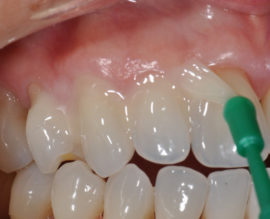 professional cleaning;
professional cleaning;- removal of petrified plaque;
- enamel polishing;
- composite restoration;
- filling;
- whitening.
If there are no contraindications, the dentist always uses fluoride varnish after cabinet cleaning. It has become so familiar that the procedure is not even paid separately.
Deep fluoridation of tooth enamel
The greatest effect in the strengthening and restoration of enamel gives deep fluoridation of teeth.. Electrophoresis also bears fruit, but it has many contraindications, and the procedure itself causes discomfort to the patient. Therefore, the deep saturation of enamel with fluorine firmly holds first place among all such techniques.
During this procedure, beneficial substances remain not only on the surface, but also penetrate deep into the enamel. If the patient has hypersensitivity, it is possible to carry out such fluorination every 6 months - discomfort from cold or hot will not be felt until the next procedure.
Deep saturation with fluorine takes the most time, as it is carried out in several stages:
- Professional cleaning is required. The choice between the available methods depends on the individual characteristics of the patient. Most often, specialists resort to ultrasonic cleaning.
- The teeth are well dried with a stream of warm air.
- The enamel is coated with a preparation with a high content of calcium and magnesium fluoride, and then dried again. This time using special lamps.
- At the end, enamel is coated with calcium hydroxide. It seals the first composition inside and allows it to restore the structure of the protective layer of the tooth even after the procedure is completed.
Deep fluoridation of tooth enamel takes 30–40 minutes; toothbrushing is usually paid separately.
Electrophoresis
This procedure is also carried out in two stages, at each of which different active substances are used. It is aimed not only at saturation of enamel with fluorine, but also at the deep penetration of this substance.For this, minimal electric discharges are used. An electrode with a pad, which is impregnated with a solution of calcium, is applied to the patient's teeth. The device delivers weak discharges of current, which can be unpleasant for the patient, but it will be difficult to name the sensations that arise.
The duration of the current is selected individually and depends on the health of the enamel and the number of fluorination procedures carried out before. The first time the exposure lasts only a few minutes, then the time is gradually increased.
When the first step is completed, the electrode gaskets change. This time, a 2–4% sodium fluoride solution is used. After exposure to this substance, active chemical processes begin in enamel that contribute to its strengthening, and a protective layer forms on the surface.
Fluoridation of teeth at home
After fluoride-rich pastes became available in regular stores, dentists sounded the alarm. The number of people with fluorosis has increased significantly. However, even today, such products are still the only way to fluoride teeth at home. Only when using them will you have to follow some rules:
- You need to choose toothpastes, which include sodium monofluorophosphate, tin or aluminum fluoride. These active ingredients are most effective and safe.
- The amount of active substance should not exceed 0.15%.
- Fluoride paste alternates with conventional products at least every other day.
- The course of home fluoridation lasts no more than one month.
- Between courses, a break of 1.5-2 months.
In addition to pastes, special medicines in the form of a gel, which contain a fairly large amount of active fluorine, are suitable for fluoridation of enamel at home. Apply such gels to all teeth immediately after they are cleaned.
It is not worth using such products without the recommendation of a doctor, it is better to consult a specialist before using regular pastes.
Dental fluoridation prices
Tooth fluorination is usually carried out comprehensively for the entire row. In Moscow, a quick procedure with mouth guards will cost 2.3–3 thousand rubles. for the entire course, deep fluoridation - from 2.7 to 4 thousand p. depending on the clinic. Electrophoresis usually costs 2–2.5 thousand rubles.
Enamel coating with fluoride varnish is the cheapest procedure. Usually it costs from 1 to 2 thousand rubles. for all your teeth. The processing of one tooth costs from 100 to 400 rubles.
The cost of the procedure is very affordable, and the benefit from it can be enormous, so it does not hurt to carry out fluorination at least once a year.

